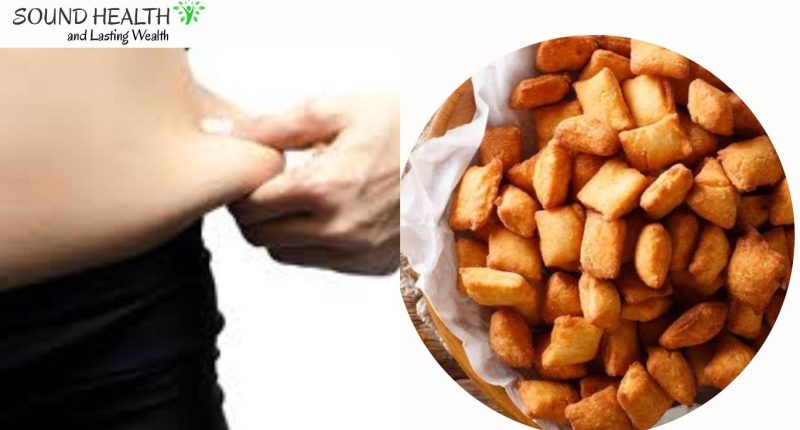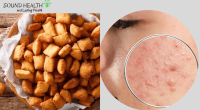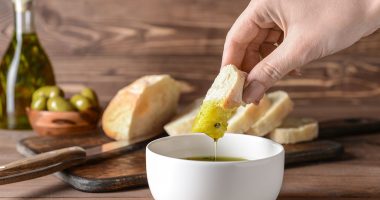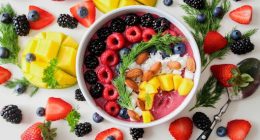Find out ” Does Chin Chin Make You Fat” – Chin chin is a type of snack that originated in West Africa. It is made from a mixture of flour, sugar, milk, and other ingredients. The dough is kneaded and then cut into small pieces, which are then deep-fried until they are crispy and golden brown. Chin chin can be enjoyed on its own or as part of a larger meal.
Nutritional Information of Chin Chin
The nutritional content of chin chin varies depending on the recipe and the brand. Generally, chin chin is high in calories, sugar, and fat. A typical serving of chin chin (about 100g) contains around 500-600 calories, 20-30g of fat, and 30-40g of sugar. It is also low in fiber and protein.
How is Chin Chin Prepared?
Chin chin is typically made by mixing flour, sugar, milk, butter, and other ingredients together to form a dough. The dough is then rolled out and cut into small pieces. The pieces are then deep-fried in hot oil until they are crispy and golden brown.
Understanding Weight Gain
Weight gain occurs when the body takes in more calories than it burns. Calories are a unit of energy that the body uses for various functions, such as digestion, movement, and breathing. When the body takes in more calories than it needs, it stores the excess energy as fat. Over time, this can lead to weight gain and obesity.
Factors That Contribute to Weight Gain
There are many factors that can contribute to weight gain. These include:
- Eating too many calories
- Consuming too much sugar and fat
- Lack of physical activity
- Genetics
- Medical conditions (e.g., hypothyroidism)
- Certain medications (e.g., antidepressants)
Does Chin Chin Make You Fat – Weight Gain?
Chin chin is high in calories, sugar, and fat, so it can contribute to weight gain if consumed in excess. However, it is important to note that no single food or snack can cause weight gain on its own. Weight gain occurs when the body takes in more calories than it burns over time. This means that if chin chin is consumed in moderation as part of a balanced diet, it is unlikely to cause significant weight gain, but consuming large amounts on a regular basis may contribute to excess calorie intake and weight gain.
Don’t miss | 7 Incredible Health Benefits of Chin Chin
The Role of Portion Size in Weight Gain
Portion size is an important factor to consider when it comes to weight gain. Eating large portions of any food, including chin chin, can lead to excess calorie intake and weight gain over time. It is important to practice portion control and to be mindful of how much chin chin you are consuming.
How to Incorporate Chin Chin into a Healthy Diet
Chin chin can be enjoyed as part of a healthy diet, but it is important to consume it in moderation and as part of a balanced meal plan. Here are some tips for incorporating chin chin into a healthy diet:
Limit portion sizes: As mentioned earlier, portion control is key when it comes to preventing weight gain. Stick to small portions of chin chin (around 1-2 servings) and pair it with other nutritious foods to make a complete meal.
Choose healthier versions: Instead of deep-frying chin chin in oil, try baking it in the oven or air frying it instead. You can also use healthier ingredients like whole wheat flour, honey, or coconut oil to make a more nutritious version.
Balance with other food groups: When consuming chin chin, make sure to pair it with other food groups to create a balanced meal. For example, you can have a small serving of chin chin with some fresh fruit and nuts for a nutritious snack.
Make it a treat: Chin chin should be enjoyed in moderation and not consumed on a daily basis. Treat it as a special treat or dessert rather than a regular snack.
Read nutrition labels: When purchasing pre-packaged chin chin, make sure to read the nutrition labels to understand the ingredients and nutritional content.
Healthy Alternatives to Chin Chin
If you are looking for a healthier alternative to chin chin, here are some options to consider:
Homemade granola: Granola is a crunchy snack that can be made with healthy ingredients like oats, nuts, seeds, and dried fruit.
Fruit and nut bars: These bars are made with wholesome ingredients like dates, nuts, and seeds, and provide a healthy source of energy and nutrients.
Roasted chickpeas: Chickpeas are a great source of protein and fiber, and can be roasted with spices for a flavorful snack.
Veggie sticks with hummus: Cut up some fresh veggies like carrots, celery, and bell peppers, and dip them in some homemade hummus for a nutritious snack.
FAQs
A: Chin chin can contribute to weight gain if consumed in excess, but no single food or snack can cause weight gain on its own. Weight gain occurs when the body takes in more calories than it burns over time.
A: Healthy alternatives to chin chin include homemade granola, fruit and nut bars, roasted chickpeas, and veggie sticks with hummus.
A: You can make chin chin healthier by using healthier ingredients like whole wheat flour, honey, or coconut oil, and by baking it in the oven or air frying it instead of deep-frying it in oil.
A: It is important to practice portion control when consuming chin chin. Stick to small portions (around 1-2 servings) and pair it with other nutritious foods to make a complete meal.
A: While chin chin can be enjoyed as part of a healthy diet, it is high in calories, sugar, and fat. It should be consumed in moderation and paired with other nutritious foods to create a balanced meal.









